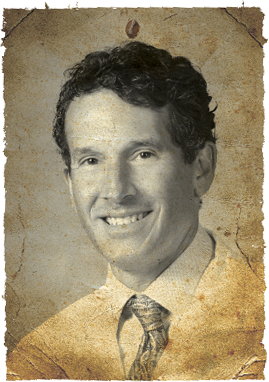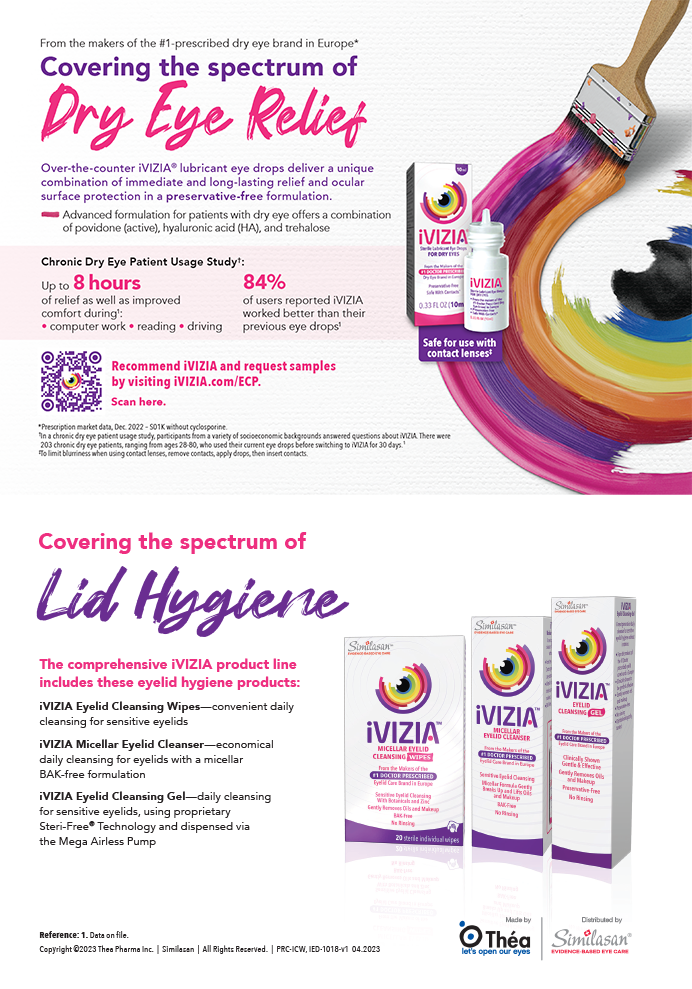
Selling your practice to a private equity firm is an excellent way to source the capital, management expertise, and know-how to grow your practice. Such a decision also frees up your time to focus on being a doctor, which is what we all went to school for in the first place. From a business perspective, you are no longer the day-to-day driver, but you are in a much faster and well-designed sports car. The decision to partner with a private equity firm is tantamount to choosing between being the driver of an Acura or a passenger in a Ferrari.
MY ACURA DAYS
I have focused on growing my business since I went into practice with my father in 1992. I wanted to build a self-sustaining ophthalmic practice that encompassed all the subspecialties, treating patients from cradle to grave and that would be the go-to practice in Baltimore for eye care. I took over the leadership of the practice in 1999 and hired a CEO to help grow the business while I focused on being a doctor and surgeon. We hired doctors of different subspecialties such as glaucoma, plastics, and retina. We also enlarged our footprint both horizontally and vertically. We grew our ambulatory surgery center and modeled ourselves as a primary care practice so that we would not be exclusively dependent on referrals from outside doctors.
One of the requirements of growing a business is figuring out how to finance the growth initiatives. I chose to leverage the debt markets when investing in my business because of the availability and low cost of capital. If I wanted to build another office, hire another doctor, or buy a practice from a retiring peer, I chose to borrow money from the bank; a million bucks here, a million bucks there, it adds up. Growth was very expensive, but I embraced the idea that if we were not growing, we would be shrinking, especially in the face of a consolidating market.
Following the financial crisis in 2008, the banks became more difficult to deal with. They changed their view on how much money I should be able to borrow and spent a lot more time looking at the financial performance of my business than they had historically. I did not want the banks to be the governors of my growth, and I was also averse to financing my business with my own personal “piggy bank” that my family and I relied on.
FINDING A NAVIGATOR
To continue growing my practice, I started to explore the possibility of working with a private equity firm. More than just capital, I wanted to partner with a firm that shared my vision, goals, and dreams and that would help me navigate the challenging terrain of the evolving eye care industry.
In 2013, I identified that partner in Varsity Healthcare Partners. Shortly after a close to 2-hour introductory call with the Varsity team, they were on a plane from Los Angeles to Baltimore to meet with me to put pen to paper on the plan that became EyeCare Services Partners (ESP).
GETTING IN THE FERRARI
Varsity Healthcare Partners and I formed and made an investment in ESP, the new management company of The Katzen Eye Group. They sourced and hired a world-class management team composed of people who have all built big businesses like the one we wanted to build. They worked with management to evaluate the infrastructure I built through the lens of “will this scale to support the business we are going to build?” They looked at one of my practice locations and said, “This is too small. Let’s build a brand-new office because we know the patient demand is there.” They created a call center and set up sophisticated systems to monitor revenue cycle management performance. They pulled all of the practice’s administrative staff out of the clinical and retail space to make more room for patient care and added a new concierge center for high-end cataract surgery.
From a patient’s standpoint, the transition to private equity ownership and new management was completely invisible. The same doctors are in the same (or new) locations, providing the same great care and services.
From a division-of-responsibility perspective, the management company manages the administrative staff, facilities, finances, and everything else on the “business” end, so I can spend most of my time on being a doctor and surgeon and taking care of patients. I do not have to worry about accounts payable, meaningful use, the merit-based incentive payment system and the Medicare Access and CHIP Reauthorization Act, hiring (and unfortunately firing), malpractice, or funding a 401(k) plan.
Since forming ESP, we have acquired a number of practices, both in Katzen’s market and in distant markets like Southern California, Denver, and Chicago. We have integrated these acquired practices and successfully developed these regional and local market networks through small and medium “tuck-in” acquisitions. We enhance all of our practices by leveraging our sophisticated infrastructure to ensure we can eliminate redundancies and take advantage of efficiencies and economies of scale, all of which create value for our private equity partners but also our physician shareholders.
Since formation, ESP had grown from a dominant Baltimore practice into a business with more than 60 clinical and surgical locations with over 130 providers across five states. ESP remains majority owned by a private equity fund, but a significant portion of the business remains owned by our very own doctors.
We have been so successful that, earlier this year, Harvest Partners, a large private equity fund with an outstanding track record in multisite health care investing (dental, dermatology, veterinary medicine, physical therapy) recapitalized ESP and replaced Varsity as our private equity partner. The transaction with Harvest Partners resulted in a big “win” for Varsity and our physician shareholders who participated in the value creation. With Harvest’s support, ESP has the capital resources of one the largest private equity funds investing in the eye care industry today, which makes me feel good about our continued growth trajectory.
THE SPEED BUMPS
Although selling my business has resulted in an amazing journey and allowed me to be a key participant in helping to build ESP, in exchange for all of our success, I had to give up certain things. Control and influence, in particular, have been hard for me to be without. For example, as ESP was in its initial phases of growth, I was in the passenger seat as infrastructure was built or reshaped, which resulted in staffing changes that I could not control. Long-time employees who probably needed to be reassigned or replaced were moved around or could not keep up with the pace of change and ultimately left. Many of these changes were ones I should have made but could not bring myself to make.
The process of change is not unique to ESP. Regardless of the practice or the private equity firm, change will come. You can look at many of our peers who are traveling a similar path, and you will see change, much of it difficult change.
Brett Katzen, MD, discusses private equity purchasing.
THE PRIZE MONEY
Depending on how a transaction is structured, selling a practice to a private equity firm can result in a number of liquidity opportunities. While there are always the upfront cash proceeds to the practice’s owners, ESP and its private equity partners have used a physician coinvestment model to ensure that physicians are invested and aligned with the private equity firm. They have made this opportunity available to both those who have sold practices to ESP and those who are associates in practices that ESP has acquired. This model allows the physicians to benefit from the value creation and upside associated with a private equity–like return. This is especially important for the younger physicians who want the upside associated with ownership without the capital risk and administrative headache associated with building and running a practice.
While all of our shareholders were successful alongside Varsity Healthcare Partners during our 3-year holding period, Harvest’s capital resources and success in the multisite health care market gives all of us here at ESP the confidence that we will be able to have a second, third, and even fourth bite of the apple as we consolidate the highly fragmented vision market.
We are now major players, and the sky is the limit to what we can do and how much additional value we can create. I continue to be a significant investor in ESP, the business I helped form, and I am looking forward to doing big things with my new management and private equity partners.
I firmly believe that a private equity-financed consolidation of ophthalmology and other eye care practices will irreversibly change the landscape of our market. Consolidation is occurring not just in our specialty and our peer physician verticals but across the entire health care landscape, including payor and providers alike. As scale becomes increasingly necessary to compete, and as it becomes harder to thrive in an overly regulated market, many of us will turn to a private equity-backed consolidator. The question is whether or not you will take the wheel or get run over.




